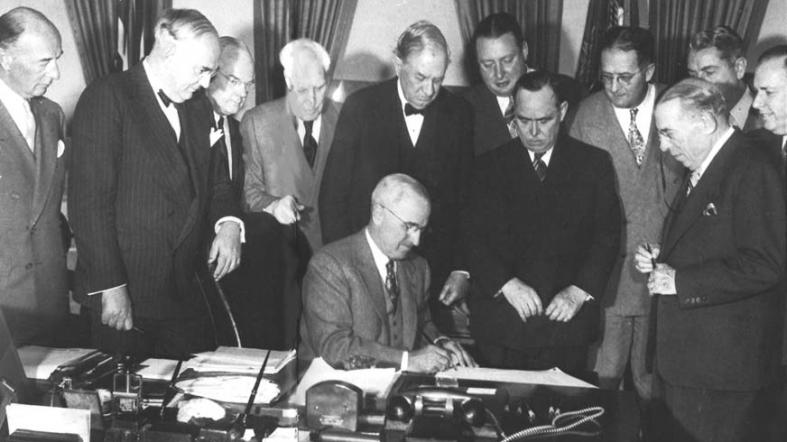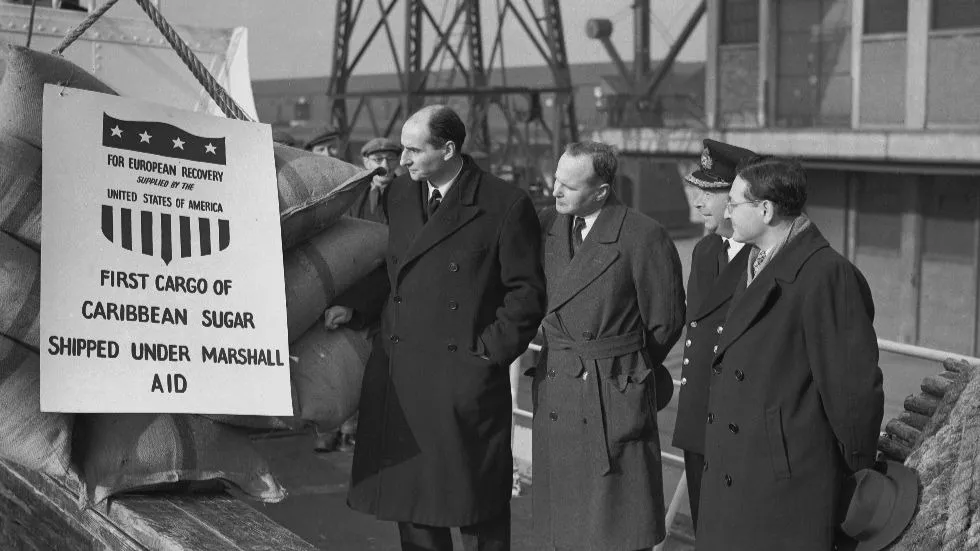
US President Harry Truman signing into law the the Marshall Plan, 1948, U.S. Department of State
"I believe that it must be the policy of the United States to support free peoples who are resisting attempted subjugation by armed minorities or by outside pressures." -President Harry S. Truman, Truman Doctrine, 1947
At the end of WWII, diplomatic relations between the U.S. and the Soviet Union broke down almost instantly as tensions rose between their competing ideologies. Both superpowers sought to expand their influence and Europe, which was in ruins, was the next target for Soviet expansion. To protect American allies in Europe, President Harry Truman signed the Economic Recovery Act of 1948, also known as the Marshall Plan. The plan organized the provision of economic and agricultural aid, which rebuilt European nations and kept them from Soviet influence. By its end in 1951, the Marshall Plan was a massive success that laid the foundation for the future of U.S. aid and the global containment of communism.

US President Harry Truman signing into law the the Marshall Plan, 1948, U.S. Department of State

Carribean sugar being shipped to Europe under Marshall Aid, 1948, The Hill
In 1950, following the success of the Marshall Plan, President Truman introduced the Point Four Program. The program would further contain the spread of communism by expanding U.S. agricultural and economic aid across the globe.
"Truman's Second Inaugural Address", 1949, CBS News